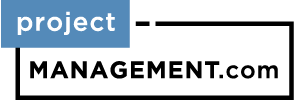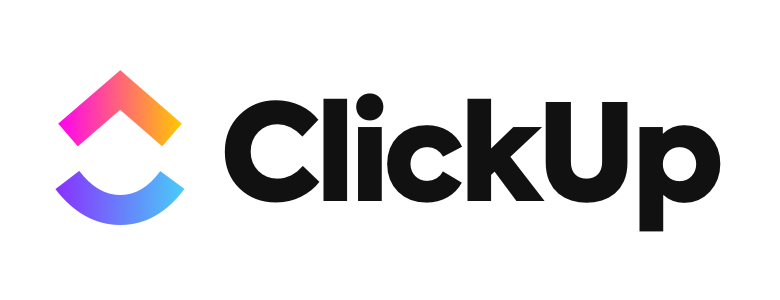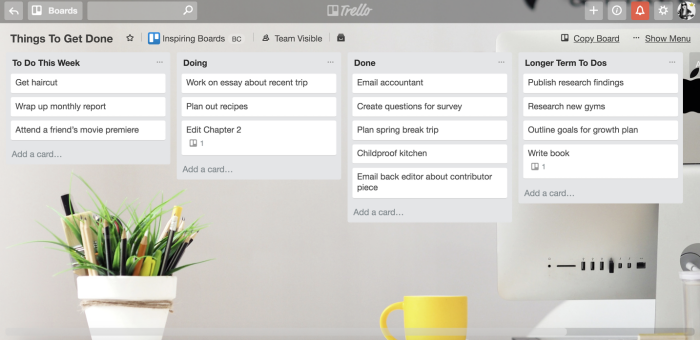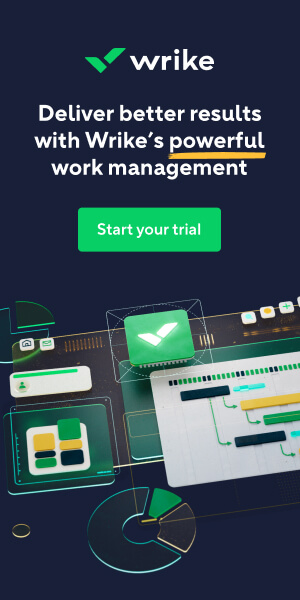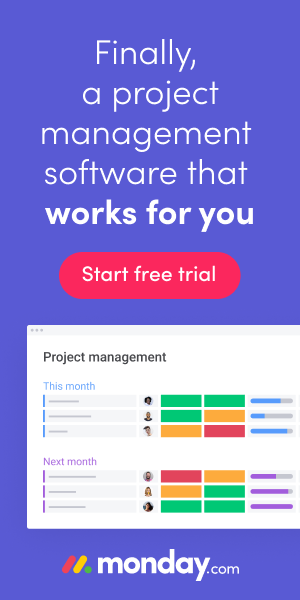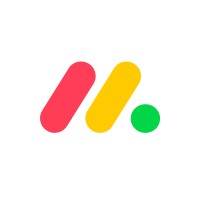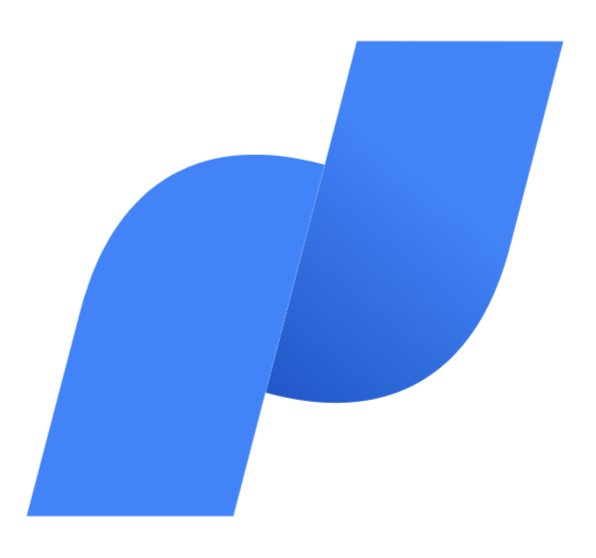We’ve written the ultimate project management software buyers guide which includes a look at some of the top project management systems available.
In a hurry? These are our picks for the best project management software on the market. These are project-management.com’s editorially independent picks, based on the research and hands-on experience of our staff.
Our Pick |
Best For |
Pricing Starts At |
|---|---|---|
Try monday |
Best All-Around Performer |
Free to try • $8/user/mo. |
Try Smartsheet |
Best for Fast-Growing Teams |
Free to try • $7/user/mo. |
Try Asana |
Best for Remote Teams |
Free to try • $10.99/user/mo. |
Try Wrike |
Best for Customization |
Free to try • $9.80/user/mo. |
Try ClickUp |
Best for Freelancers |
Free to try • $5/user/mo. |
Try Trello |
Best for Smaller Projects and Teams |
Free to try • $5/user/mo. |
Try Jira Work Management |
Best for Agile Teams |
Free to try • $7.75/user/mo. |
Visit Airtable.com |
Best for Teams That Need Custom Applications |
Free to try • $10/user/mo. |
Visit Adobe.com |
Best for Enterprise Adobe Users | |
Try Basecamp |
Best for Collaboration |
Free to try • $15/user/mo. |
Featured Partners: Project Management Software
Our Picks: 2023’s Top Project Management Software
Best All-Around Performer
monday.com’s monday work management is customizable for scalable teams, workflows, and use cases. The highly visual project management platform provides an intuitive centralized workspace for users across the organization. Easy-to-implement automations, notifications, and team collaboration simplify the assignment, tracking, and reporting of any kind of work.
Read our complete monday.com review
monday.com allows users to modify views and create dashboards to display important project information to decision-makers. monday work management offers a free plan for up to two user seats and several paid plans for teams with different work requirements. It has ready-to-use templates, unlimited project boards, interactive documents, and custom fields. The software is mobile-friendly and includes features for file and project portfolio management, email integration, calendar sync, and in-depth analytics and reporting.

| monday Pros | monday Cons |
|---|---|
| • Time-saving, easy-to-implement automations • Responsive support, with 24/7 support available in all plans • Industry-specific variations and templates | • Visual user interface (UI) takes time to get used to • Gantt charts export as PDFs, which may be difficult to use in other applications • Tasks cannot be linked across boards |
Why We Picked monday
monday offers nearly limitless flexibility and automations. The overall positive user experience made choosing monday.com as the Best All-Around Performer an easy decision.
Best for Fast-Growing Teams Seeking a Secure, Scalable Solution
Smartsheet is a leading work execution platform with strong real-time work management features, collaboration, and automation tools. Organizations dynamically plan, execute, and report on work at scale for any type of project. The tool allows different views of real-time data laid out in instant Gantt, card, grid, and calendar views.
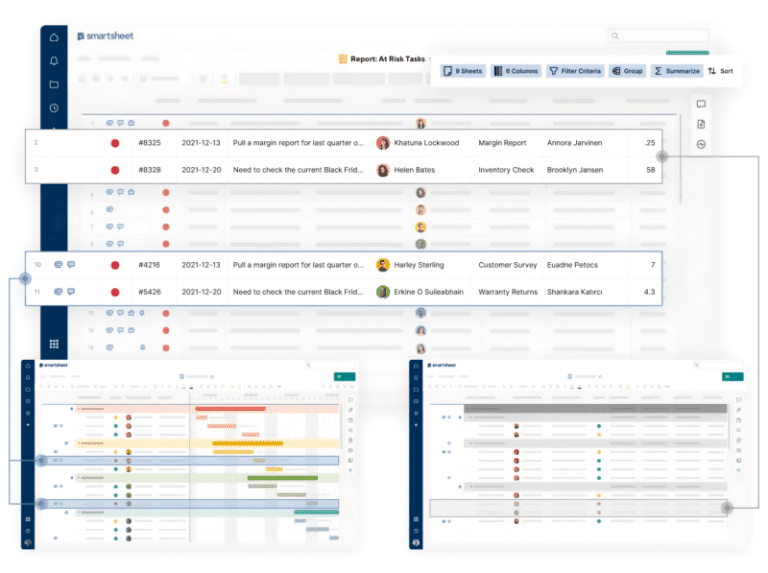
Read our complete Smartsheet review
Smartsheet also has automatic update requests and can be used for waterfall and Agile-based projects, product launches, sprint planning, and more. The resource management feature provides real-time visibility into who is busy and who is available.
Smartsheet is a mature, feature-rich option that works well for a range of project types and processes. It is an excellent addition to project management offices, especially for teams with multiple project leaders who are responsible for providing management with detailed insights in larger cross-functional environments.
| Smartsheet Pros | Smartsheet Cons |
|---|---|
| • Familiar spreadsheet-like interface can simplify onboarding and implementation • Customizable automations are easy to use • Users can instantly toggle between various project views | • Requires some training to be able to use it at a basic level • Cost prohibitive for small and midsize entities • Amount of information that can be shown may overwhelm some users |
Why We Picked Smartsheet
Fast-growing teams may outgrow the one-size-fits-most capabilities of other PM systems. Smartsheet delivers for teams that need the ability to customize and build more complex functions.
Best for Remote Teams
Asana enables more effective project and task management across the organization in one interface. It provides an organized workspace where users can look at project data using different work views, such as lists, timelines, and boards. Users can create and assign tasks, build plans, customize workflows, and track project progress over time.
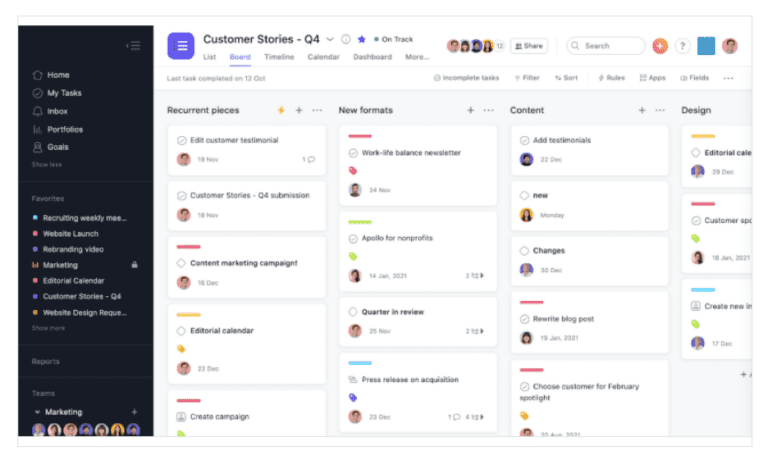
Read our complete Asana review
Asana offers one of the best free plans available, with feature-rich access for teams of up to 15 people for an unlimited time. With Asana, users can easily track bugs, manage sprints, and plan and run campaigns, events, and product launches. The project management app includes built-in messaging, file storage, a workflow builder, unlimited dashboards, custom fields, forms, automation, mobile apps, portfolios, workload management, approvals, and proofing.
Asana has one of the most robust feature sets available, but we found its inability to assign tasks to more than one user created occasional speed bumps in more complex workflows. As a workaround, other individuals can be tagged in a task. This wasn’t a dealbreaker, but we’d welcome the addition of multi-user assignments.
| Asana Pros | Asana Cons |
|---|---|
| • Flexible views and customizations give teams maximum control over their project organization and task management environments • Comprehensive set of features, including in-app collaboration and approvals • Robust free plan for individuals and small teams | • Does not allow tasks to be assigned to more than one user • Needs better data export functionality • Users want more how-to guides and case studies |
Why We Picked Asana
A full-featured free-forever plan makes it easy to try Asana on for size. Then, as your team grows, Asana easily scales with your company.
Best for Customization
Wrike is considered by some to be one of the most powerful project management platforms, designed to help teams adapt to new ways of working. It is flexible enough to meet the disparate needs of just about any team, including marketing, design, professional services, product management, and business operations teams. The project management app can easily adapt to a variety of business needs, whether for managing Agile teams, clients, or remote workers.

Read our complete Wrike review
Wrike offers a free plan to unlimited users with basic functionality that is sufficient for simple projects. Paid plans include more advanced features, such as shareable dashboards, interactive Gantt charts, time tracking, cross-tagging, custom fields and workflows, automation, and productivity integrations. Enterprise plans have additional security features like single sign-on (SSO), two-factor authentication (2FA), password policies, custom roles, and audit reports that are suitable for hybrid workspaces.
| Wrike Pros | Wrike Cons |
|---|---|
| • Comprehensive project management with a focus on transparency and tracking • Project and team organization can be easily customized to meet teams’ needs • Free plan is available for unlimited users | • Mobile app needs UI/UX enhancements • Users feel the UI could add color, Dark mode for easier veiwing • Difficult to locate custom rules to automate tasks |
Why We Picked Wrike
Wrike’s built-in customizability means a single platform can meet the needs of most, if not all, of your various teams’ needs.
Best for Freelancers
ClickUp positions itself as a project management hub where teams come together to plan, organize, and collaborate on work using tasks, documents, chat, whiteboards, and more, all in one tool. But it’s not just for traditional departments and teams — freelancers can connect with vendors, clients, and peers to work as a virtual team.
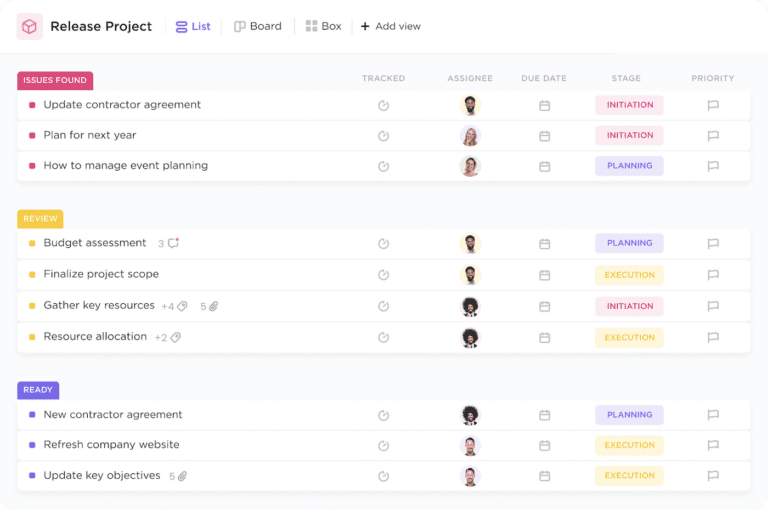
Read our complete ClickUp review
In addition to scheduling, task management, and reporting functions that are the core of any project management system, ClickUp shines in its ability to automate multistep processes that require action by multiple users. Administrators can write custom rules to define when and which user needs to complete a task. It also includes notifications telling users when action is required.
| ClickUp Pros | ClickUp Cons |
|---|---|
| • Easy to use with in-depth features for all experience levels • Flexible multi-function app eliminates the need for other tools • User feedback is encouraged, driving constant site improvement updates | • Mobile dashboards could be improved • Performance can be slow at times • New users may be overwhelmed without reviewing tutorial videos first |
Why We Picked ClickUp
Long-term success as a freelancer requires close management of your time and deliverables. With an investment of a few hours in tutorial videos, ClickUp’s ease of use and accessible feature set will lessen the workload for you and/or your team. ClickUp is great for keeping track of details, giving you more time to focus on the work that delivers your clients the most value.
Best for Smaller Projects and Teams
Trello’s kanban-style list-making application is a web-based and highly visual tool for organizing projects and phases into cards and boards. With a single glance, Trello tells you exactly what’s being worked on, who’s working on it, and where certain tasks and subtasks are in progress.
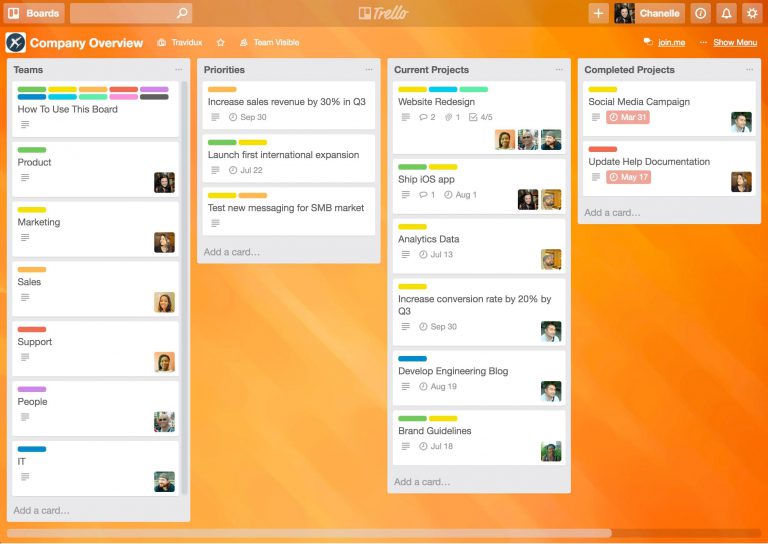
Read our complete Trello review
Trello can be thought of as digital sticky notes (cards) on a whiteboard divided into project phases. This makes it quick and easy to add details as tasks or lists, then organize, move around, and prioritize those tasks or lists. Trello is great for when your team is starting with a list of tasks and deadlines that needs to be built into an immediate action plan.
| Trello Pros | Trello Cons |
|---|---|
| • Flexible, easy to use, and, dare we say it … fun? • Simple and intuitive drag-and-drop interface • Add tasks and lists and quickly organize and track them | • New items get added to the end of a long list which can be inconvenient for organization when creating many cards at once • Easy to create too many boards and lose track of things • Not ideal for larger teams or projects |
Why We Picked Trello
Making sweeping generalizations is dangerous, but we’d hazard a guess that nearly every project manager has used Trello at some point in their career. While it may be best suited for smaller-scale projects, Trello’s nearly non-existent learning curve makes it an attractive option for teams of all backgrounds. It’s especially helpful for those that don’t have the operational advantages of a trained project manager and who need a PM solution that’s ready to use out of the box.
Best for Agile Teams
Jira Work Management is a development work collaboration tool that’s part of the Atlassian suite of products. As such, its strength lies in its robust project and issue tracking features for technical and development teams. Task management features in this project management app enable users across the organization to plan, track, manage, and complete tasks, including repeat tasks. It is free for up to 10 users with scalable paid plans for bigger teams.
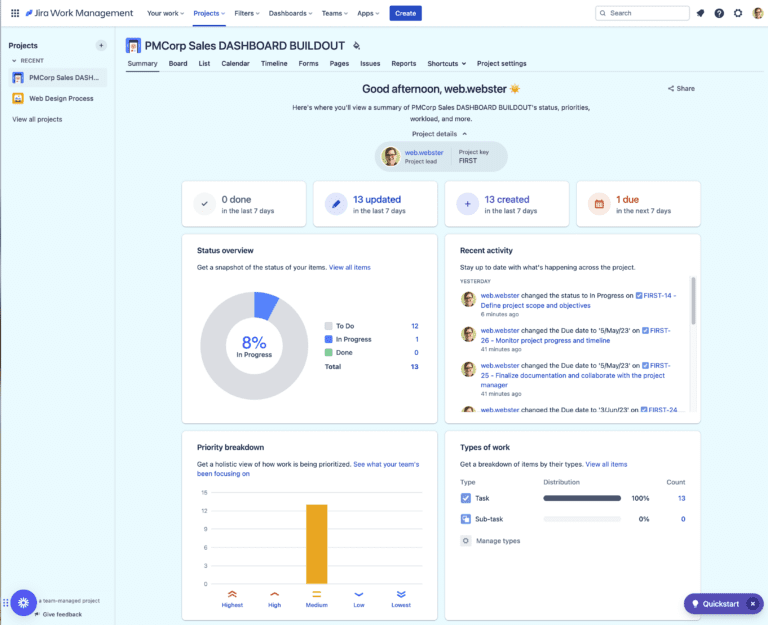
Jira Work Management allows users to create and manage unlimited tasks and projects. Users can access multiple views, such as lists, timelines, calendars, and boards, for different perspectives. A drag-and-drop builder lets users create forms to standardize work, and automation rules offer multiple actions to choose from. Thousands of integrations with apps, plug-ins, and add-ons make this a customizable app to fit many different project scenarios.
| Jira Work Management Pros | Jira Work Management Cons |
|---|---|
| • Robust dev team-specific views, including requirements and test case management • Multiple view options • Free plan available that’s suitable for small teams | • Complicated user interface • Calendar view needs enhancements • No built-in timeline to track progress |
Why We Picked Jira Work Management
If your team works in software development, engineering, or a similar field, Atlassian’s numerous solutions are likely already part of your tech stack. Seamless integration with Confluence, Slack, Microsoft Teams, HubSpot, and more than 500 other available integrations puts Jira Work Management on numerous shortlists.

Best for Teams that Need Custom Applications
Airtable is a complete project management software solution that has evolved and been adapted for many business types. The software works like an Excel spreadsheet, which is familiar to most users. Features like file attachments, drop-down options, and checkboxes make it simple to set up and track projects from scratch or to use a template.
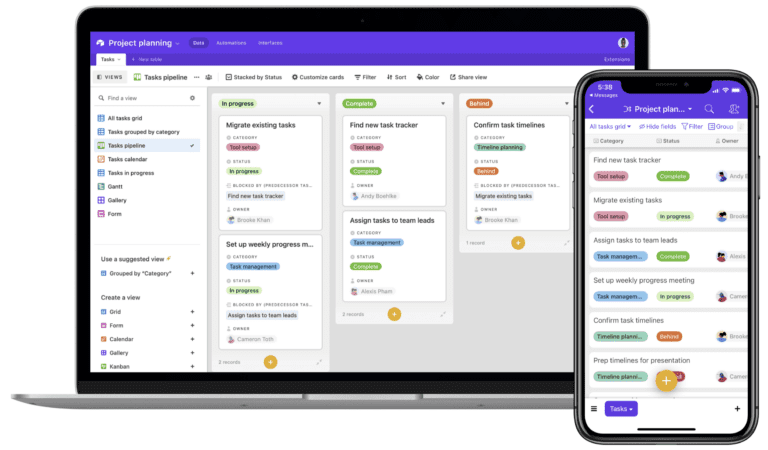
Read our complete Airtable review
Airtable allows teams to work together seamlessly through a centralized database for efficiency and speed. Users can access data and migrate datasets to other databases without error. They can also easily transition from a basic spreadsheet system to one that includes useful features like file attachments, kanban card stacks, revision history, calendars, and reporting.
| Airtable Pros | Airtable Cons |
|---|---|
| • Easy to organize, schedule, and track project progress • Numerous templates and layouts to choose from • Will feel familiar to those who have managed projects using spreadsheets | • Lengthy setup required, resulting in a steeper learning curve for some users • Lack of in-app communication options • No auto-refresh, requires manual sorting |
Why We Picked Airtable
No matter how comprehensive a PM solution is, some teams have unique project management requirements that more boilerplate, robust solutions don’t meet. For those cases, Airtable’s no-code approach to building and customizing project planning software will give teams the exact solution they need.
Best for Enterprise Adobe Users
Adobe Workfront’s intuitive tools and project templates help teams launch projects faster. The solution includes built-in tracking, automated approvals, and analytics to help teams manage resource use for projects and project portfolios.
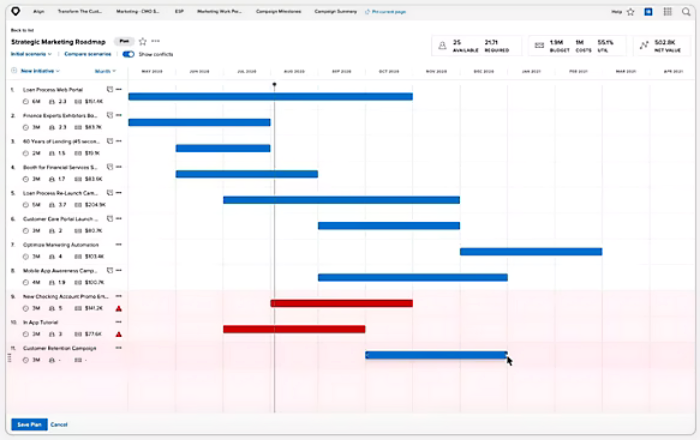
Read our complete Adobe Workfront review
Workfront’s demand management feature creates request queues with auto-routing to automate work intake, assignment, and tracking. Users can create custom forms and automate approvals to further streamline work. Workfront empowers teams to easily incorporate existing Agile processes into their workflows. It supports Scrum and Kanban methodologies, as well as waterfall and hybrid work approaches.
| Workfront Pros | Workfront Cons |
|---|---|
| • Simple user-friendly interface • Strong collaboration features and functionality • Seamless integration for teams that already work within the Adobe ecosystem | • Comprehensive feature set may create a steep learning curve • Designed for project managers and not the people doing the work • May be daunting for users unfamiliar with project management software |
Why We Picked Adobe Workfront
Workfront’s focus on automating repetitive but mission-critical workflows allows teams to focus more time and energy on high-value work.
Best for Collaboration
Basecamp is a project management tool with integrated team communication that’s suitable for all types of work environments, especially remote work. It helps companies, teams, and individuals organize tasks, find the information they need quickly, and get real-time project progress updates. Everyone involved can collaborate with dedicated tools for planning projects, sharing files, and discussing ideas.
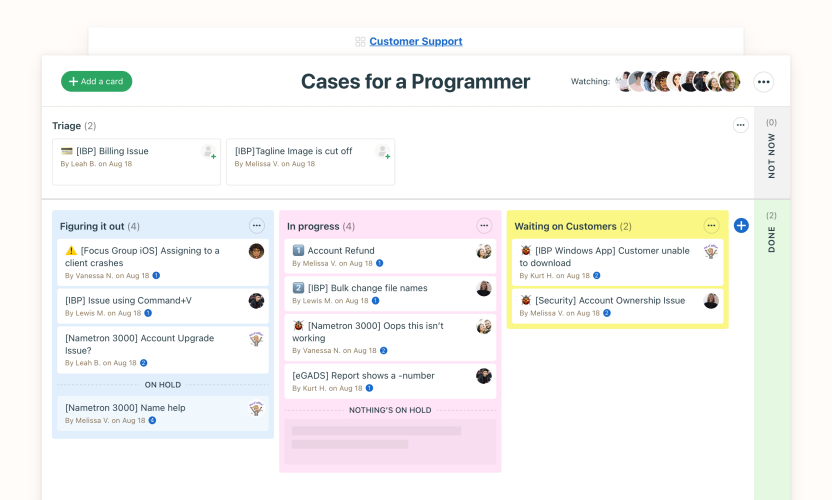
Read our complete Basecamp Review
After a 30-day free trial, Basecamp’s lower-tier plan is available for $15 per user per month and includes all features for unlimited users and projects. The solution also includes a to-do list, scheduling, docs and files, charts, and automated reports. Users can choose to communicate with message boards, group chats, and/or direct messages.
| Basecamp Pros | Basecamp Cons |
|---|---|
| • Seamless communication and collaboration • Configurable notifications • Robust feature set for free plan | • No free-forever plan available for small teams/freelancers • A single pricing plan is not ideal for all teams • Limited drag-and-drop capabilities • No time tracking |
Why We Chose Basecamp
While we wish Basecamp’s free trial lasted longer than 30 days, the fact that Basecamp makes all of its features and capabilities available with that trial should give teams more than enough opportunity to put the system through its paces.
Methodology
FAQ: What Is Project Management Software?
Project management software is used to plan, schedule, track, collaborate and report on projects. More specifically, these essential tools project managers, teams, and other contributors complete tasks; record and track requirements; streamline resources; and manage time, budget, and scope constraints. Whether used as a stand-alone tool or as a suite of solutions, project management software — often shortened to PM software — is a must for any organization looking to maximize time and money while minimizing human error.
Learn More. Read What is a Project Manager?
FAQ: What Are the Different Types of Project Management Software?
There are many types of project management solutions to consider. Desktop project management applications offer advanced features, scalability, and security to support multiple users and groups over an internal network. Cloud-based project management tools have made it possible for vendors to offer sophisticated, subscription-based solutions to businesses of all sizes, making it so users can access the tool from any location.
When selecting project management software for your business, these are the main types and formats you’ll need to consider:
FAQ: What Are the Most Important Features of Project Management Software?
Choosing the right features for your team will depend on the size of your team, the complexity of the projects you run, and the project types and use cases you work with. Prospective PM software buyers should look for the following features:
FAQ: What Are the Most Important Purchase Considerations for Project Management Software?
Implementing the Right Project Management Software for Your Business
Companies should carefully plan how they roll out new project management software. The responsible project manager will need to first get the support of major stakeholders—from C-level executives to end users on the project team. From there, project managers should create a schedule that allocates time for learning how to use the software before taking on a major project. That way, each and every project will be set up properly.
Finally, be ready with training materials, support documentation, and (ideally) onboarding teams to ensure individuals don’t have to spend too much time learning about these project management programs and can quickly pivot back to their normal workloads.
